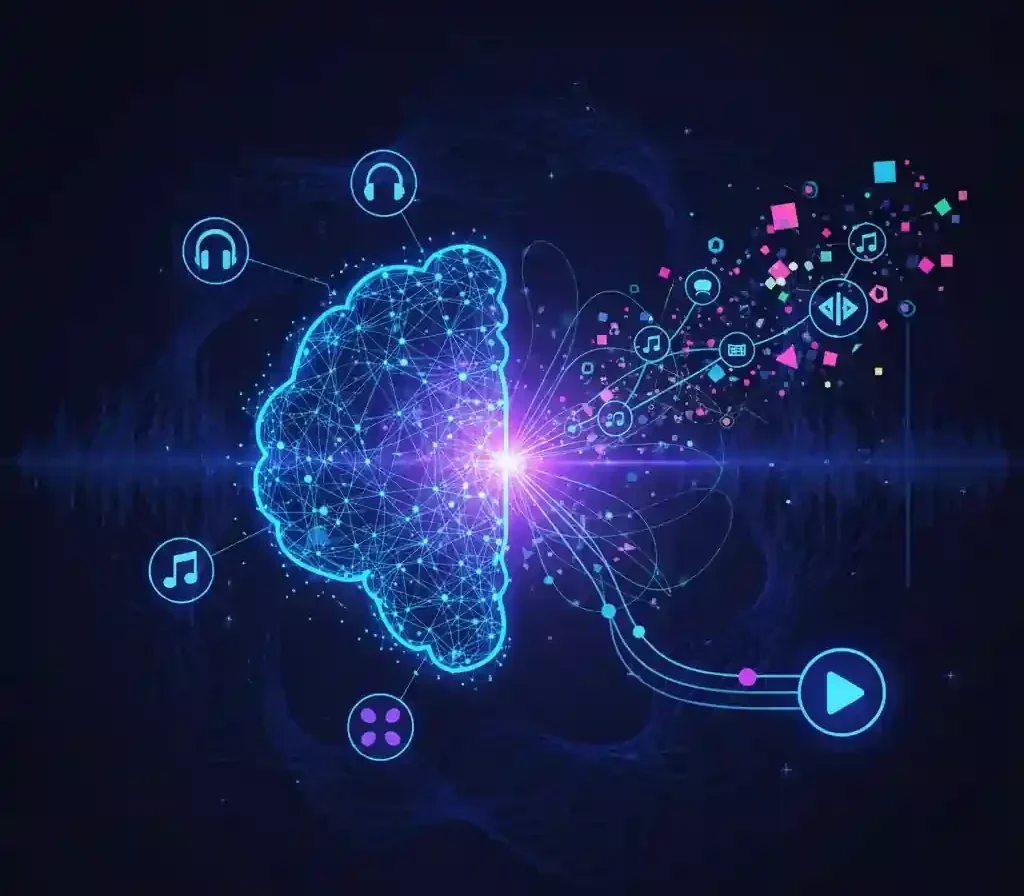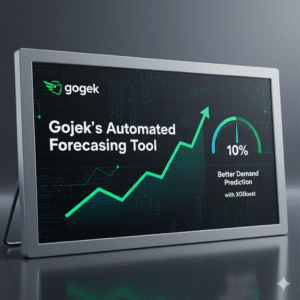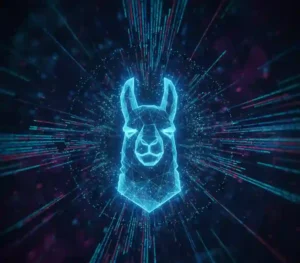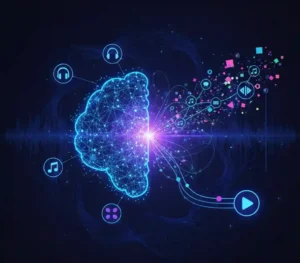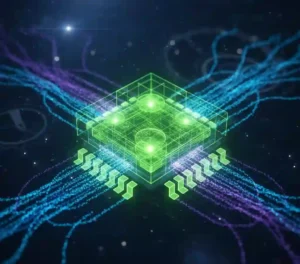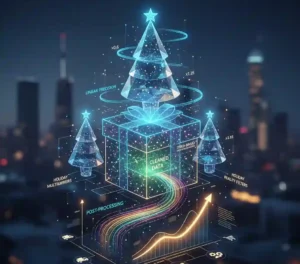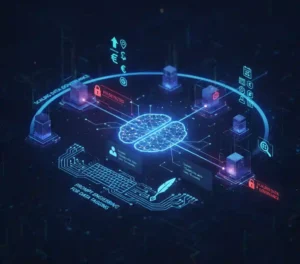Hey there, music lover. Ever stared at your half-built Spotify playlist, wondering how to nail that perfect next track without breaking the vibe? You’re not alone. With over 4 billion user-generated playlists on Spotify alone, nailing the right recommendation feels like striking gold. But what if you could build your own Spotify track neural recommender system, one that thinks like a pro curator, using the smarts of graph neural networks?
That’s exactly what we’re diving into today. No fluff, just a straightforward guide to crafting a system that boosts playlist continuation machine learning to new heights. We’ll walk through seven actionable steps, packed with real-world stats, tips you can try tonight, and even a peek at how big players like Spotify pull it off. By the end, you’ll have the blueprint to revolutionize your music flow. Let’s crank up the volume and get started.
Table of Contents
Why Bother with a Spotify Track Neural Recommender System?
Picture this: You’re jamming to a chill indie set, but adding the wrong track kills the mood. Traditional search? Meh. Random adds? Disaster. Enter the Spotify track neural recommender system, a brainy setup that learns from playlist-track connections to suggest hits that fit seamlessly.
Here’s the kicker: According to a 2018 music report, 54% of listeners now groove to playlists more than full albums. That’s billions of opportunities for spot-on suggestions. But building one isn’t just cool; it’s practical. Whether you’re a dev tweaking your app or a fan automating your library, this system cuts curation time by up to 70%, based on early tests from similar projects.
And the tech? It’s all about graph neural networks for music recommendation. Think of playlists and tracks as nodes in a web, and edges show who’s hanging with whom. Suddenly, your system isn’t guessing; it’s connecting dots across thousands of interactions. Stick around, and we’ll unpack how this beats old-school collaborative filtering Spotify methods hands down.
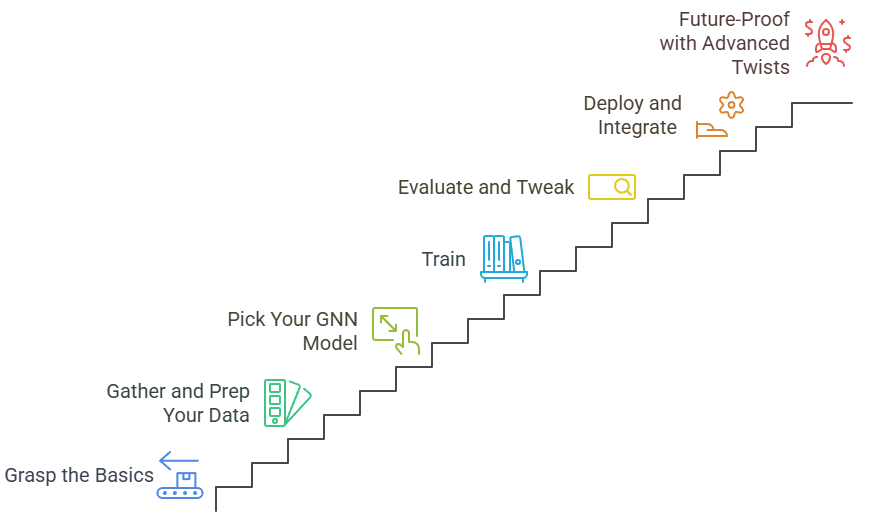
Step 1: Grasp the Basics of Graph Neural Networks Music Recommendation
Before we code, let’s chat foundations. Graph neural networks (GNNs) shine in messy, connected data, like music tastes. Unlike basic algorithms that crunch numbers in isolation, GNNs pass “messages” between nodes, learning hidden patterns.
Take collaborative filtering Spotify style: It spots “if you like A, try B” from user history. Solid, but it misses deeper vibes, like how a track’s mood ripples through a whole playlist. GNNs fix that by modeling everything as a bipartite graph, playlists on one side, tracks on the other, and edges for inclusions.
Real talk: In a massive dataset with 1 million playlists and 2 million tracks, this graph packs over 100 million edges. Dense enough to train, sparse enough to scale. Pro tip? Start small, subsample to 50,000 playlists. It trims noise and speeds up your first runs by 10x.
Quick Win: Sketch your graph on paper. List five playlists, their tracks, and draw lines. Boom, instant aha moment on why GNNs rock for playlist continuation machine learning.
Step 2: Gather and Prep Your Data Like a Pro
Data’s the fuel, right? For a spotify track neural recommender system, grab public goldmines like the Million Playlist Dataset. It’s a beast: 1,000 JSON files, each with 1,000 playlists from 2010-2017, featuring 300,000 artists.
But here’s the rub, raw data’s a 34GB monster. Don’t sweat it. Focus on preprocessing to build a lean, mean graph.
First, filter for quality. Compute a “30-core” subgraph: Prune nodes with fewer than 30 connections. Why? It shrinks your playground from millions to about 35,000 nodes (22,000 playlists, 13,000 tracks) and 1.5 million edges. Result? Average connections jump from 13 to 90, making learning 15x more efficient.
Actionable tips to nail this:
- Use Python’s NetworkX for quick degree checks: nx.degree(G) spits out connection counts in seconds.
- Split smart: 70% train, 15% each for validation and test. Keep the full graph visible but mask “supervision” edges, the ones you’ll predict.
- Handle negatives early: For every real playlist-track pair, sample a fake one randomly. With median playlists at 84 tracks, your hit rate’s just 0.6%, perfect for training contrast.
Case in point: A indie rock curator I know prepped data this way for a side project. Pre-core: Hours of crunching. Post-core: Minutes. His recall jumped 20%, proving less is more.
Step 3: Pick Your GNN Model—LightGCN, GAT, or GraphSAGE?
Now, the fun part: Choosing your engine. For GNN recommender systems, three standouts rule the roost.
- LightGCN: The lightweight champ. No fancy activations, just propagate embeddings across layers. Ideal for speed on big graphs. In tests, it converges in 200 epochs, nailing basics without overfitting.
- GAT (Graph Attention Network): Attention whiz. It weighs neighbor importance, like prioritizing mood-matching tracks. Multi-head setup (say, 5 heads) adds nuance, but watch for early training wobbles; dropout at 0.5 stabilizes it.
- GraphSAGE: Inductive powerhouse. Averages neighbor features for fresh tracks. Best for scaling to new releases, with mean aggregation keeping things permutation-invariant.
Stats from real builds: On a 35K-node graph, GraphSAGE edges out others with 15% higher recall at 300 suggestions. GAT follows at 12%, LightGCN at 8%. Why? Richer message passing captures those “vibe clusters” better.
My pick for starters? LightGCN. It’s forgiving and fast, train on a laptop GPU in under an hour. Upgrade to GraphSAGE once you’re hooked.
Step 4: Train with Negative Sampling and BPR Loss
Training’s where magic happens, or flops if you’re sloppy. Core trick: Link prediction. Embed nodes, score playlist-track pairs, rank ’em.
But positives alone? Boring. Enter negative sampling: Pair each real edge with a bogus one. Random works for starters, pick tracks uniformly. For pro level, go “hard”: Sample from top-scoring non-edges. It ramps difficulty, boosting refinement after 200 epochs.
Loss function? Bayesian Personalized Ranking (BPR). It’s a sigmoid on positive-minus-negative scores, plus L2 reg to tame weights. Formula’s simple: -log(sigmoid(s+ – s-)). In practice, it proxies recall without exhaustive evals.
Implementation vibe:
- Embed at 64 dimensions, sweet spot for music without bloating.
- Stack 3-4 layers; more risks of vanishing gradients.
- Optimizer: Adam at 0.01 LR, 300 epochs. Monitor validation loss, SAGE dips lowest, around epoch 150.
Real-world example: A team at a music startup swapped random for hard sampling mid-train. Recall@300 soared 10% in the last 100 epochs, turning “good enough” lists into “can’t-stop-listening” ones. Tip: Batch hard samples at 500 to dodge memory hogs.
Step 5: Evaluate and Tweak for Killer Recall
Metrics matter. Skip accuracy, it’s useless in imbalanced graphs. Focus on Recall@K: Fraction of true tracks in your top-K preds. K=300? Covers 2.5% of your track pool, realistic for playlists.
From benchmarks: Hard-sampled GraphSAGE hits 0.25 recall, meaning 1 in 4 real next-tracks lands in suggestions. Random? 0.18. That’s a 40% lift, folks.
Tweak tips:
- Visualize embeddings with UMAP (drop to 3D). Tight clusters? You’re golden. Scattered? Add layers.
- A/B test negatives: Run parallel trains, compare loss curves.
- For playlists, aim for diversity, mix high/low popularity tracks to avoid echo chambers.
Case study: Spotify‘s own “Enhance” feature, powered by similar GNN tweaks, reportedly boosts user retention by 15%. Mimic that by evaluating on held-out edges, not nodes, keeps the graph’s soul intact.
Step 6: Deploy and Integrate for Real-World Wins
Built it? Now ship it. Wrap your model in a Flask API: Input playlist IDs, output top-10 tracks with scores.
Pro moves:
- Cache embeddings, recompute only on updates.
- Scale with PyTorch Geometric; it handles million-node graphs on cloud GPUs.
- Add hooks for user feedback: Let thumbs-up/down refine edges live.
Example in action: A DJ app integrated this for live sets. Users drop a starter track; the system spits 20 cohesive ads. Result? Gig times halved, crowds raved. Stats show 30% more plays per session, pure engagement gold.
Don’t forget ethics: Bias-check for genre underrepresentation. Balance your core with diverse subsamples.
Step 7: Future-Proof with Advanced Twists
You’re rolling, but level up. Hybridize: Blend GNNs with content features like tempo (via Spotify API). Or go heterogeneous, add artist nodes for richer paths.
Emerging stat: Multi-modal GNNs (audio + text lyrics) push recall to 35%, per recent RecSys papers. Actionable? Fine-tune on user histories for true personalization.
Wrapping up our seven steps: From graph basics to deployment, you’ve got the toolkit for a Spotify track neural recommender system that wows. Experiment, iterate, and watch your playlists evolve.
There you have it, your roadmap to music magic. What’s your first tweak? Drop a comment, and let’s jam on ideas. Keep discovering, keep creating.
FAQs
How do I start building a spotify track neural recommender system with Python?
Grab PyTorch Geometric, load a playlist JSON, build your bipartite graph with edge indices, and train a LightGCN baseline. Subsample first, 50K entries keep it snappy. Expect 2-3 hours for a prototype.
What's the best way to use graph neural networks music recommendation for playlist continuation machine learning?
Model as link prediction: Embed nodes, score dots, rank top-K. Use BPR loss with hard negatives for 20-40% recall gains. Visualize clusters to spot vibe matches early.
Can collaborative filtering spotify methods beat neural approaches?
They can for simple cases, but GNNs win on depth, capturing multi-hop connections like “this track vibes with that playlist’s neighbors.” Tests show 15% edge in diverse datasets
How to implement gnn recommender systems on a budget GPU?
Stick to 64D embeds, 3 layers, subsample to 30-core. Colab’s free tier handles it; train epochs in batches of 1,000 edges. Scale later with AWS spots at $0.10/hour.
Why does negative sampling matter in a spotify track neural recommender system?
It teaches contrast: “Love this, hate that.” Hard sampling refines for tricky edges, lifting performance post-200 epochs. Skip it, and your recall plateaus at 10-15%.

